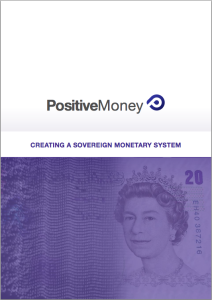Can we remove state support for banks?

“Just remove state support for banks and let markets hold them to discipline!” -This argument often comes from the Austrian school of economics, and proposes that banks would not have taken so much risk without the safety nets provided by governments and central banks. Furthermore, without these safety nets, those banks that were mismanaged would have been liquidated and would have made way for new market entrants with better business practice: in other words, bad businesses would make way for good ones.
The argument makes sense, but the policy prescription of removing deposit insurance and lender of last resort whilst keeping the current structure of banking is a dead end.
In the current system, 97% of money consists of bank deposits. These deposits are liabilities of commercial banks, which means that they depend on the health of the bank’s balance sheet. In the event of a bank failure (due to, for example, bad investment decisions), these deposits would become ‘frozen’ and unable to be spent. In the case of the failure of Royal Bank of Scotland, if the bank had not been rescued by taxpayers, millions of customers would have been unable to make payments. This would have had a devastating effect on the real economy, as well as causing panic that could have resulted in a wave of bank failures. In an extreme case this could have resulted in a reversion to a cash-only economy.
So the health of our payments system, which underpins the real economy, depends on banks not taking excessive risks, even though risk taking is inherent to banking. Ultimately, it depends on the readiness of the government to intervene when banks fail. To prevent banks failing and threatening the payments system and real economy, governments resort to high levels of regulation and supervision. However, the complexity of this regulation (such as the 400+ page Basel III or the 8,000+ page Dodd-Franks bill) means that it is certain to be full of loopholes and therefore largely ineffective.
In addition, to prevent runs on banks (which could bring down banks and the payments system), government provides deposit insurance – an £85,000 guarantee on the balance of each individual’s account. But this amounts to the state underwriting the liabilities of private banking corporations. It means that the liabilities of banks are also the contingent liabilities of the state. When a bank fails, the government is faced with liquidating the bank and becoming liable to reimburse all depositors, or injecting capital to restore the bank’s balance sheet (a bail out). It will almost always be cheaper and quicker to bail out the bank than to liquidate it, meaning that no bank beyond a certain size will be allowed to fail. Thus deposit insurance, rather than making the system safer, actually protects banks from the consequences of their own actions, encourages greater risk taking, and therefore makes the system riskier.
However, if deposit insurance (the £85k on bank balances) were officially withdrawn, the first rumour of potential problems at a large bank would be enough to encourage a run on that bank. In such a situation, the government would immediately re-instate deposit insurance (in the same way that deposit
insurance caps were raised or removed during the financial crisis). Likewise, central banks are unlikely to have the nerve to refuse to lend to a bank in distress, knowing that the failure of one bank could rapidly cause a breakdown in the payments system.
These problems remain as long as the payment system consists of liabilities of commercial banks, because any bank failure threatens the payment system and therefore the entire real economy.
A sovereign money system tackles this problem by separating the payments system (made up mainly of Transaction Accounts) from the risk-taking activities of banks, and allows taxpayer-funded safety nets to be removed without risking a panic in the process.
The money that is used by the real economy to make payments would exist at the central bank, rather than being liabilities of a commercial bank. This means that even if a commercial bank were to fail due to bad investments, the payment accounts that it administered could easily be transferred to a functioning bank with no loss to the taxpayer or account holders.
This knowledge that banks could be allowed to fail without affecting the payments system means that moral hazard would be reduced. Banks would have an incentive to take lower levels of risk (because there would be no option of a bailout or rescue from the taxpayer). The fact that bank failure would not pose such a threat to the real economy means there would be less need to use complex regulation to protect banks from themselves. Simpler regulation is likely to be more effective in safeguarding economic stability. (Of course the regulator still needs to ensure that there is no fraud or mis-selling of financial products).

This was an extract from the paper Creating a Sovereign Monetary System.
It presents a reform to the banking system that would remove the ability of banks to create money, in the form of bank deposits, when they make loans. It would transfer the ability to create new money exclusively to the state, creating what we have termed a ‘sovereign money’ system. The proposal has its origins in a proposal first put forward by Frederick Soddy in the 1920s, and then later by Irving Fisher and Henry Simons in the aftermath of the Great Depression. Variations of these ideas have since been proposed by Milton Friedman (1960), James Tobin (1987), John Kay (2009) and Laurence Kotlikoff (2010). Most recently, economists at the International Monetary Fund modelled Irving Fisher’s original proposal and found both “strong support” for all of its claimed benefits and extra positive effects (Benes & Kumhof, 2012). While inspired by Irving Fisher’s original work and variants on it, the proposals in this paper have some significant differences.